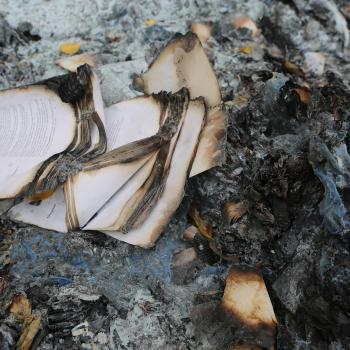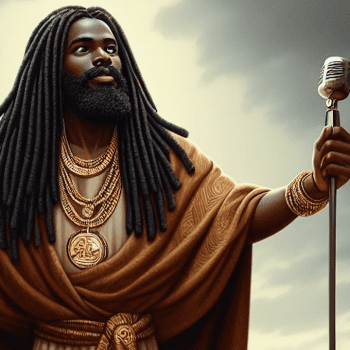 Christians should look elsewhere for a more powerful and timely musical metaphor for racial harmony.
Christians should look elsewhere for a more powerful and timely musical metaphor for racial harmony.
Though well-intentioned, Stevie Wonder and Paul McCartney’s “Ebony and Ivory” has been justifiably criticized since its release. Yet it remains one of the most popular songs of all-time, and a quick scan of the YouTube comments section shows that it continues to bless listeners with its message of hope.
Ebony and ivory live together in perfect harmony
Side by side on my piano keyboard, oh Lord, why don’t we?
I pride myself on my lack of cynicism, but in the era of Black Lives Matter it’s hard for me not to cringe when I hear it. And that response makes me uncomfortable as a Christian.
TRUE HOPE
Why? Because it seems at first like a betrayal of the central concept of my faith: hope. My belief as a Christian is that Jesus has redeemed the world both now and forever.
Since it’s a hope based on the life and death and resurrection of Christ, it’s not just the sugary, greeting-card kind of hope that assuages my white guilt at 2 a.m. (“Oh well, another Black man shot. At least we will all live forever in the love of Jesus!)
Instead, real Christian hope is the kind that sustained the slaves through hundreds of years of death at the hands of white Christians. It’s the kind that was based on an unswerving faith that the true message of the Bible was not the one spouted by their masters, but instead that of Jesus and the Hebrew slaves. It was the hope that appears in African-American spirituals and gospel songs: complex and defiant, angry and righteous. Joyful, not just happy. Rich, not sweet.

THE LYRICS
And that’s where “Ebony and Ivory” fails. Written by Paul McCartney, the song presents a pie-in-the-sky kind of hope, a candy-coated vision of racial harmony that satisfies the moral sweet-tooth of us white people. It allows us to believe that all it will take to bring about a world of peace and harmony is a change of heart. The question at the end of the chorus is clearly rhetorical, playing on a faith in our shared goodness, rather than a prophetic cry for justice that dares us to actually search our souls for the answer.
The verse continues to presenting a list of platitudes that read like a fourth-grader’s gloss on ethics, even daring to use the present tense in the unintentionally tragic final line:
We all know that people are the same where ever we go
There is good and bad in everyone,
We learn to live, we learn to give each other what we need to survive together alive.
These lyrics describe a world that only exists in the minds of white people. They support the myths we have created that allows us to still call ourselves “Christian” when the society we have built incarcerates Black people at five times the rate of white people. Like all myths, they tell stories that help us understand the world in ways that work for us.
Operating freely under the excuse of providing us with a (one-dimensional) idea of “hope”, these lyrics paint a picture of a world that is not supported by reality.
Thus, the lyrics are a lie. And as people who claim to follow someone who called himself the “Way, the Truth, and the Life”, we cannot allow such dangerous lies to continue to dominate our thinking. Without truth, we have neither the way nor the life that Jesus offers.
The lyrics are simplistic and false, and that makes it a bad song. But that also makes it a dangerous one. Why?
Because, like a lollipop designed by a flavor scientist, it gives us exactly what our appetites desire, exactly when we need it – and nothing more. It’s a sweet jolt of energy and flavor that satisfies our cravings in the exact way we have been conditioned to expect them to be. Then we move on, their taste barely a memory.
“Ebony and Ivory” satisfies our desire to be “good Christians” who “believe in hope.” But it ultimately leaves us unchanged. Like the seed that has fallen on rocky soil, it’s not long before all we have left is that same barren dirt.

THE MUSIC
Despite the serious problems with the lyrics, it’s actually the music that is the most problematic element of the song. First of all, the song’s easy-going character does not match the gravity of the words. For all its problems, this is still a song about a serious social issue. In fact, if you look at the lyrics and try to forget the music, you might recognize that the song actually belongs to a genre all Christians know: the sermon. Were these lyrics set to music with more depth or richness – like the edgy funk of Stevie Wonder’s “I wish”, or the sublime tenderness of McCartney’s “Yesterday” – the lyrics would actually gain more power (it’s amazing what music can do!) In fact, with a few modifications, the lyrics to this song could easily be sung to a stately hymn tune, like “Gethsemane” (the tune for “As With Gladness Men of Old,”). The result would be a transformation of these syrupy words into a graceful and inspiring hymn. Try it:
Ebony and ivory
Live in perfect harmony
Side by side as piano keys
Lord our God, O why don’t we?
Ebony and ivory
Live in perfect harmony
But the worst musical part of this song is the extended vamp (starting at 3:10 in the video.) Emerging from the hazy background, the backup singers repeat “Ebony, ivory, livin’ in perfect harmony” as the music rocks back and forth between two saccharine major-seventh chords (by 1982 already a cliché in pop music.) While the attempt was probably to paint a musical picture of an eternally peaceful groove of racial harmony – an easy-listening Peaceable Kingdom – the toothless music makes it sound more like some Antebellum fantasy: a pastoral vision in which both masters and slaves coexist in a happy equilibrium, each knowing their own place.
WE NEED A DIFFERENT SONG TODAY
I don’t deny the power of music to change our hearts and minds. And I don’t deny its power to gives us a sense of true hope: a hope that is rich and deep, and built on real understanding.
But “Ebony and Ivory” is not the song that’s going to get us there. If we want to find a song that will help us understand the complexity of racism in America, and one that gives us an appropriately rich metaphor for the possibility of racial reconciliation, we will need to look somewhere else.
In the next part of this article I’ll suggest a song that may surprise you. It’s a song written by a Black man during the height of the Jim Crow era. It’s a piano piece that breathes life into the dead symbol of “Ebony and Ivory”, and in doing so transforms those black and white notes into an explosion of color – an explosion whose repercussions still resound in American society to this very minute. As a result, this song provides us with the complex and challenging metaphor for racial reconciliation that we need today.
The composer’s name is Scott Joplin, and the song is “Maple Leaf Rag.” Stay tuned….













